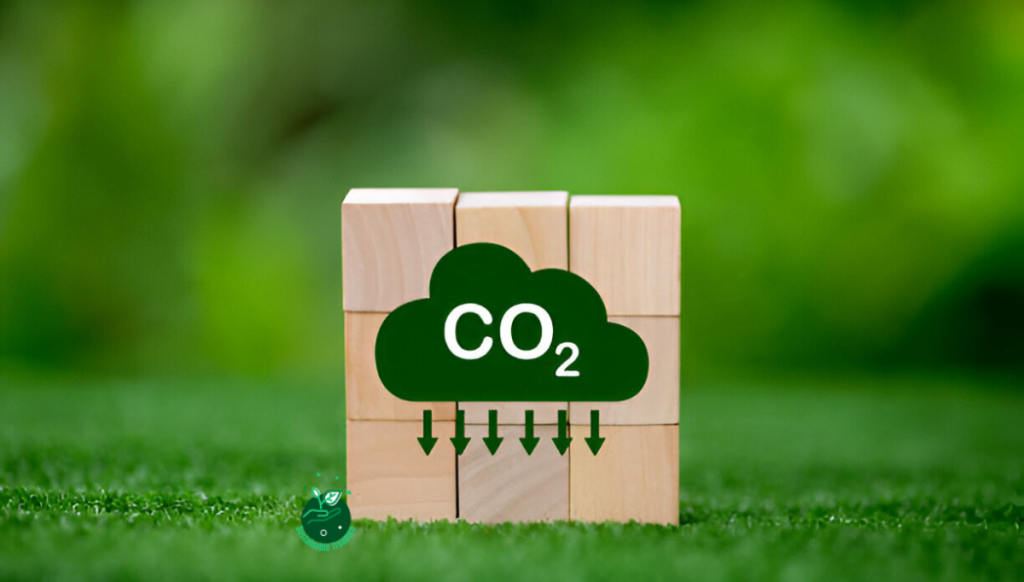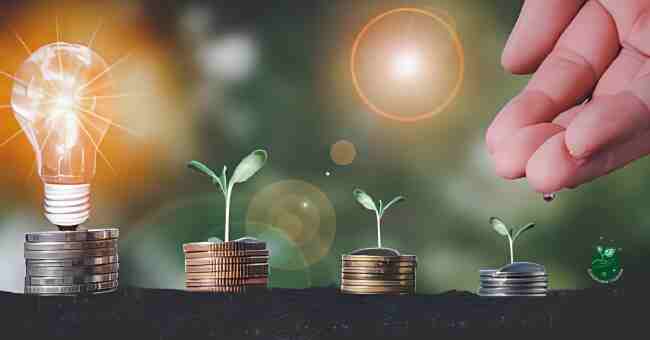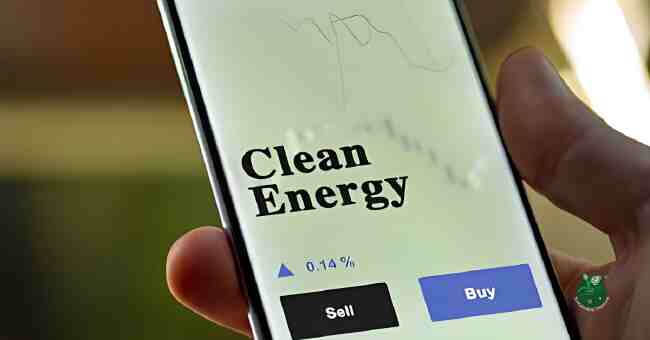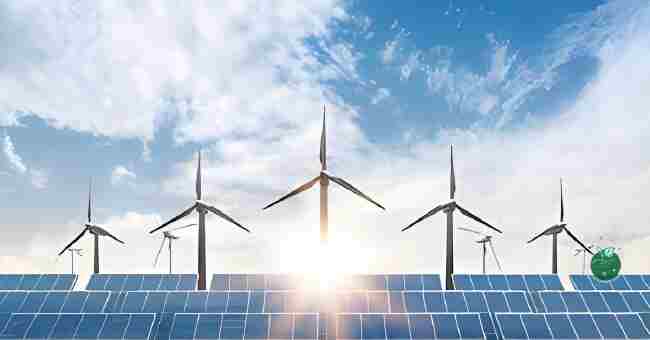Table of Contents
The rise of low-carbon technologies presents a multitude of investment opportunities for forward-thinking individuals.
As the world transitions towards a more sustainable future, companies offering innovative solutions in renewable energy, clean transportation, and eco-friendly products are poised for growth.
I vividly remember the day my grandfather, a lifelong environmentalist, sat me down and shared his vision for a greener planet.
His passion was contagious, and from that moment, I knew I wanted to be part of the solution. Through responsible investing in low-carbon technologies,
we can not only generate returns but also contribute to a better world for future generations.
Let me explain further.
Solar Panel Installation and Manufacturing

As the world transitions towards renewable energy sources, solar power has emerged as a frontrunner.
The demand for solar panel installation and manufacturing is soaring, presenting lucrative investment opportunities.
Governments worldwide are offering incentives and subsidies to promote solar adoption, making it an attractive option for homeowners and businesses alike.
Additionally, advancements in solar panel technology have increased efficiency and reduced costs, further driving demand.
Key Investment Opportunities:
- Established solar panel manufacturers
- Innovative solar technology companies
- Solar installation and maintenance services
Wind Turbine Production and Maintenance
Wind energy is another rapidly growing renewable energy sector. As countries strive to meet their emissions reduction targets, the demand for wind turbines is increasing, presenting investment opportunities in production and maintenance.
| Wind Turbine Investment Areas | Description |
|---|---|
| Turbine Manufacturing | Companies producing advanced wind turbine components and systems. |
| Wind Farm Development | Firms involved in planning, constructing, and operating wind farms. |
| Maintenance and Services | Providers of wind turbine inspection, repair, and optimization services. |
Electric Vehicle (EV) Manufacturing
The transportation sector is a significant contributor to global greenhouse gas emissions.
As a result, the demand for electric vehicles (EVs) is rapidly increasing, presenting investment opportunities in EV manufacturing.
Major automakers are investing heavily in EV production, while new entrants are disrupting the market with innovative technologies.
The development of charging infrastructure and advancements in battery technology further support the growth of the EV industry.
EV Investment Hotspots:
- Established automakers with strong EV lineups
- Startups developing cutting-edge EV technologies
- Battery and charging infrastructure providers
Sustainable Aviation Fuels
The aviation industry is under pressure to reduce its carbon footprint, driving the development of sustainable aviation fuels (SAF).
These fuels, derived from renewable sources such as biomass and waste, offer a lower-carbon alternative to traditional jet fuel.
Investing in companies involved in SAF production, distribution, and adoption can provide exposure to this emerging market.
Green Hydrogen Production
Hydrogen is gaining traction as a clean energy carrier, and the production of green hydrogen (generated from renewable sources) is a promising investment opportunity.
Green hydrogen can be used in various applications, including transportation, industrial processes, and energy storage.
As countries strive to decarbonize their economies, the demand for green hydrogen is expected to increase significantly.
Green Hydrogen Investment Opportunities:
- Electrolysis technology providers
- Renewable energy companies for hydrogen production
- Hydrogen storage and distribution infrastructure
Energy-Efficient Building Materials
Buildings account for a significant portion of global energy consumption and emissions.
Investing in companies developing energy-efficient building materials can contribute to reducing the carbon footprint of the construction industry.
These materials include insulation products, energy-efficient windows, and sustainable construction materials like cross-laminated timber (CLT) and recycled materials.
Key Investment Areas:
- Insulation manufacturers
- Sustainable construction material producers
- Smart building technology companies
Carbon Capture and Storage (CCS) Technologies
Carbon capture and storage (CCS) technologies are crucial for mitigating greenhouse gas emissions from industrial processes and power generation.
These technologies capture carbon dioxide (CO2) emissions and store them securely underground or utilize them for other purposes.
Investing in companies developing and deploying CCS technologies can provide exposure to this growing market as industries strive to reduce their carbon footprint.
Waste-to-Energy Solutions
The growing focus on circular economies and sustainable waste management has led to increased interest in waste-to-energy solutions.
These technologies convert various types of waste, such as municipal solid waste, agricultural residues, and industrial waste, into energy.
Investing in companies offering waste-to-energy solutions can contribute to reducing greenhouse gas emissions while generating renewable energy.
Waste-to-Energy Investment Opportunities:
- Waste processing and gasification technologies
- Anaerobic digestion facilities
- Waste-derived fuel production companies
Precision Agriculture and Vertical Farming
Agriculture is a significant contributor to greenhouse gas emissions, and investing in precision agriculture and vertical farming technologies can help reduce its environmental impact.
Precision agriculture involves using data-driven technologies to optimize crop yields while minimizing resource consumption and emissions.
Vertical farming, on the other hand, involves growing crops in controlled indoor environments, reducing the need for land and water resources.
Investment Opportunities:
- Precision agriculture software and sensor providers
- Vertical farming equipment and technology companies
- Sustainable urban farming initiatives
Sustainable Packaging Solutions
The rise of e-commerce and the growing awareness of the environmental impact of packaging have driven the demand for sustainable packaging solutions.
Companies offering eco-friendly packaging materials and innovative packaging designs present investment opportunities.
These solutions include biodegradable and compostable materials, recycled packaging, and reusable packaging systems.
Sustainable Packaging Investment Areas:
- Biodegradable and compostable packaging manufacturers
- Recycled packaging material producers
- Reusable packaging solution providers
Water Treatment and Conservation Technologies
Water scarcity is a growing global concern, and investing in water treatment and conservation technologies can contribute to addressing this challenge while reducing the environmental impact of water usage.
These technologies include water purification systems, desalination plants, water recycling solutions, and efficient irrigation systems.
Water Technology Investment Opportunities:
- Water purification and desalination companies
- Water recycling and reuse solution providers
- Smart irrigation system developers
Sustainable Forestry and Reforestation Projects
Forests play a crucial role in mitigating climate change by absorbing and storing carbon dioxide. Investing in sustainable forestry and reforestation projects can contribute to preserving and expanding these natural carbon sinks.
These investments may involve sustainable timber production, agroforestry initiatives, and reforestation projects aimed at restoring degraded land.
Forestry Investment Opportunities:
- Sustainable timber producers
- Agroforestry and reforestation project developers
- Carbon offset and credit providers
Bioplastics and Sustainable Polymers
Plastic pollution is a significant environmental concern, and investing in bioplastics and sustainable polymers can contribute to reducing the impact of conventional plastics.
Bioplastics are derived from renewable sources like plant-based materials or agricultural waste, while sustainable polymers are designed for recyclability and biodegradability.
Investment Areas:
- Bioplastic and biopolymer manufacturers
- Recycled and biodegradable plastic producers
- Plastic waste management and recycling solutions
Sustainable Fashion and Textiles
The fashion industry has a significant environmental impact, and investing in sustainable fashion and textiles can contribute to reducing its carbon footprint and promoting circular economies.
Sustainable fashion includes the use of eco-friendly materials like organic cotton, recycled fibers, and innovative textile solutions like biodegradable and closed-loop fabrics.
Investment Opportunities:
- Sustainable textile and fabric manufacturers
- Ethical and eco-friendly fashion brands
- Textile recycling and upcycling initiatives
Green Building and Sustainable Construction
The construction industry is a major contributor to greenhouse gas emissions, and investing in green building and sustainable construction practices can help mitigate its environmental impact.
Green building involves the use of energy-efficient materials, sustainable design principles, and renewable energy sources in construction projects.
Sustainable construction practices focus on minimizing waste, maximizing resource efficiency, and reducing the carbon footprint of construction activities.
Green Building Investment Areas:
- Green building material manufacturers
- Sustainable architecture and design firms
- Energy-efficient building technology providers
Sustainable Transportation Infrastructure
Investing in sustainable transportation infrastructure can contribute to reducing emissions from the transportation sector while promoting accessibility and mobility.
This includes investments in public transportation systems, electric vehicle charging networks, bike-sharing initiatives, and pedestrian-friendly urban planning projects.
Sustainable Transportation Investment Opportunities:
- Electric vehicle charging infrastructure providers
- Public transportation system developers
- Bike-sharing and micro-mobility solution providers
Renewable Energy Storage Solutions
The intermittent nature of renewable energy sources like solar and wind presents challenges for grid integration and energy management.
Investing in renewable energy storage solutions can help address this issue and enable a more reliable and efficient renewable energy supply.
These solutions include battery storage systems, pumped hydro storage, compressed air energy storage, and thermal energy storage technologies.
Renewable Energy Storage Investment Opportunities:
- Battery storage system manufacturers
- Pumped hydro and compressed air storage developers
- Thermal energy storage technology providers
Smart Grid and Energy Management Solutions
Transitioning to a low-carbon economy requires a modernized and intelligent energy grid capable of integrating renewable energy sources, managing energy demand, and improving energy efficiency.
Smart grid and energy management solutions involve the use of advanced technologies like smart meters, grid automation systems, and energy management software to optimize energy usage and reduce waste.
Investment Areas:
- Smart meter and grid automation technology providers
- Energy management software and data analytics companies
- Demand response and energy efficiency solution providers
Sustainable Finance and Green Bonds
As the demand for sustainable and environmentally conscious investments grows, the sustainable finance and green bond markets have emerged as attractive investment opportunities.
Green bonds are debt instruments issued by corporations, governments, and financial institutions to finance environmentally friendly projects and initiatives.
Sustainable finance encompasses a range of investment products and services that consider environmental, social, and governance (ESG) factors.
Sustainable Finance Investment Opportunities:
- Green bond issuers and funds
- ESG-focused investment funds and portfolio managers
- Sustainable finance advisory and consulting firms
Circular Economy and Waste Management Solutions
The circular economy model aims to minimize waste and maximize resource efficiency by keeping materials and products in use for as long as possible through reuse, recycling, and regeneration.
Investing in circular economy and waste management solutions can contribute to reducing greenhouse gas emissions, conserving natural resources, and promoting sustainability.
Circular Economy Investment Areas:
- Waste recycling and resource recovery companies
- Product life-cycle management and service providers
- Industrial symbiosis and eco-industrial park developers
By investing in these low-carbon technologies and sustainable solutions, individuals and organizations can contribute to the transition towards a more sustainable and environmentally conscious future while potentially generating attractive returns.
FAQs
Why Should I Invest in Low-Carbon Technologies?
Investing in low-carbon technologies is crucial for several reasons. Firstly, the global shift towards a sustainable, environmentally conscious economy presents significant growth opportunities for companies offering innovative solutions in areas like renewable energy, clean transportation, and eco-friendly products and services.
Secondly, as governments worldwide implement policies and regulations to combat climate change and reduce greenhouse gas emissions, companies aligned with these goals are likely to benefit from favorable market conditions, subsidies, and incentives.
By investing in low-carbon technologies, you can position your portfolio to capitalize on this burgeoning market.
What Are the Risks Involved in Low-Carbon Tech Investments?
While low-carbon technologies offer promising investment opportunities, there are also risks to consider. Some of these risks include regulatory uncertainties, as policies and incentives can change based on political landscapes.
Additionally, technological advancements and disruptions may render certain solutions obsolete, impacting the competitiveness of companies in these sectors.
However, diversification and careful due diligence can help mitigate these risks. It’s essential to research companies thoroughly, evaluate their financials, competitive advantages, and long-term viability before investing. Seeking guidance from financial advisors knowledgeable in sustainable investing can also be beneficial.
What Is the Difference Between Green Bonds and Sustainable Finance?
Green bonds and sustainable finance are related but distinct concepts. Green bonds are debt instruments issued to finance specific environmental or climate-related projects, such as renewable energy installations, energy-efficient buildings, or sustainable transportation initiatives. The proceeds from green bonds are earmarked for these designated projects.
Sustainable finance, on the other hand, is a broader concept that encompasses various investment products and services that consider environmental, social, and governance (ESG) factors in addition to financial returns. It includes strategies like ESG integration, impact investing, and socially responsible investing.
How Do I Evaluate a Company’s Low-Carbon Credentials?
Evaluating a company’s low-carbon credentials is crucial when investing in sustainable technologies. Start by examining the company’s environmental policies, sustainability reports, and greenhouse gas emissions data. Look for companies committed to reducing their carbon footprint and implementing eco-friendly practices throughout their operations and supply chains.
Additionally, research the company’s products and services, assessing their potential to contribute to a low-carbon economy. Certifications, third-party verifications, and industry recognitions can also provide insights into a company’s environmental performance and commitment to sustainability.
What Role Do Renewable Energy Storage Solutions Play?
Renewable energy storage solutions play a vital role in the transition to a low-carbon economy. While renewable sources like solar and wind are intermittent, energy storage technologies can store excess energy generated during peak production periods for use during periods of low production or high demand.
This not only improves the reliability and consistency of renewable energy supply but also enhances grid stability and energy management.
Investing in companies developing battery storage systems, pumped hydro storage, compressed air energy storage, and thermal energy storage technologies can contribute to the widespread adoption of renewable energy sources.
How Important Is the Circular Economy for Low-Carbon Investments?
The circular economy is essential for low-carbon investments as it aims to minimize waste, conserve natural resources, and reduce greenhouse gas emissions.
Companies focused on circular economy principles, such as waste recycling, resource recovery, product life-cycle management, and industrial symbiosis, can significantly contribute to a sustainable future.
By investing in these companies, you support initiatives that promote resource efficiency, reduce the demand for virgin materials, and keep products and materials in use for as long as possible, thereby reducing the environmental impact of production and consumption.
What Role Do Smart Grids and Energy Management Solutions Play?
Smart grids and energy management solutions are critical enablers of a low-carbon economy. These technologies allow for the efficient integration of renewable energy sources, demand management, and energy optimization, reducing waste and improving overall energy efficiency.
Smart meters, grid automation systems, and energy management software provide real-time data and insights that enable more informed decision-making and better allocation of energy resources.
Investing in companies offering these solutions can contribute to the modernization of energy infrastructure and the realization of a sustainable energy future.
How Can I Diversify My Low-Carbon Tech Investment Portfolio?

Diversification is key when investing in low-carbon technologies to mitigate risks and capitalize on various opportunities.
Consider a well-balanced portfolio that includes a mix of established companies with proven track records and emerging innovators with disruptive technologies.
Additionally, diversify across different sub-sectors, such as renewable energy generation, sustainable transportation, energy storage, circular economy solutions, and green building materials.
Geographic diversification can also be beneficial, as policies, incentives, and market conditions may vary across regions.
By maintaining a diversified low-carbon tech investment portfolio, you can potentially reduce volatility and enhance long-term returns while contributing to a more sustainable future.
Conclusion
As we reflect on the rise of low-carbon technologies and the numerous investment opportunities they present, it’s crucial to remember that these innovations are not just about financial gains but also about creating a more sustainable future for our planet.
The key takeaways are the vast potential for growth in sectors like renewable energy, sustainable transportation, and eco-friendly solutions, as well as the importance of investing in companies that prioritize environmental responsibility and innovative technologies.
Now is the time to take action and align your investment portfolio with a low-carbon future. Seek out companies that are actively working towards reducing their carbon footprint and contributing to a more sustainable world.
By doing so, you can potentially generate attractive returns while playing a part in the global effort to combat climate change and protect our environment for generations to come.



